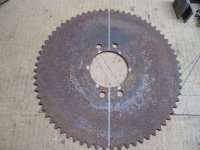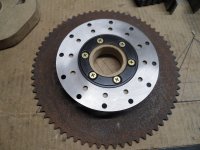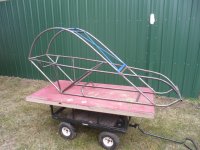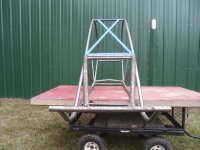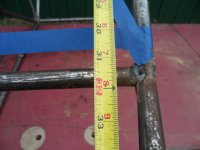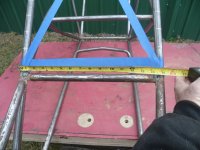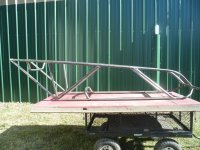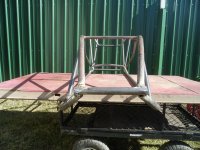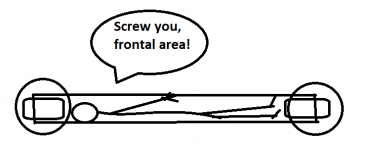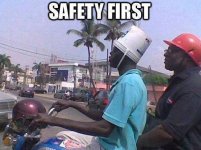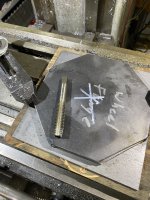Functional Artist
Well-known member
Hey T,Here bees sum pickters frum wen we jus starded.
View attachment 145930 View attachment 145931
Maybe ya can git bedder idea, of what it is.
I used the same kinda concept (bolted a rotor to the hub of a sprocket) on my mini-Aerial Atom kart
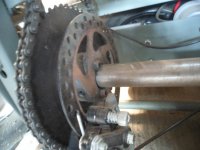
Another view
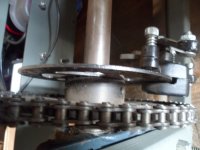
But, for this situation the rotor flange (wood in the middle) needs to be permanently welded on to the hub
...& then, mount the rotor on to the outer side of the flange
...& the sprocket to the inner side of the flange
So, back to the wooden mock up hub
...maybe something like this
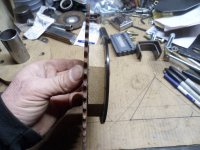
On the wheel
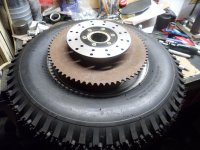
Side view
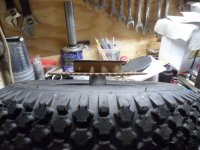
A closer view
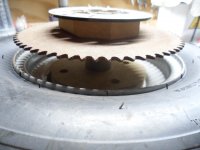
I was thinking that by using a mostly blank sprocket, that maybe we can use the (6) rotor bolts
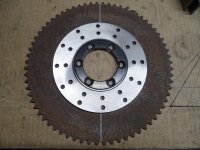
...to also, mount a DIY split sprocket (with (3) bolts on each side of the split)
* This sprocket is only for illustration purposes ('cause the center hole is too big)
